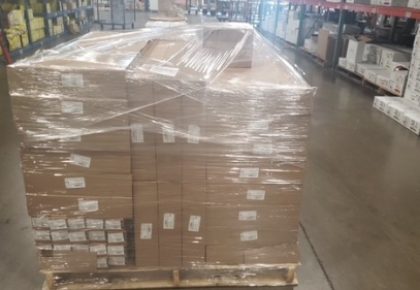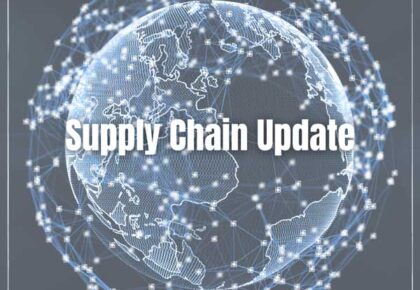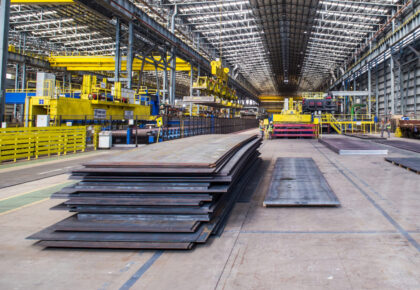The Trump Effect on Electrical Supplies
Are you a commodity trader? Most people in the electrical industry would reply with a resounding “Nope” when asked this question. But if you buy building wire, load centers, conduit and pretty much most things used in our market, you sort of already are. The value of the material you own can fluctuate daily, and it’s not always in your favor.
If you have a big job coming up, and based your bid on the price of pipe and wire today, you might be in for some sticker shock when you actually purchase it down the road. This is where open communication with your supplying partners becomes vital. In our business, no news is usually good news. Both Cold Rolled Steel (think your standard EMT Pipe) and Electronic Grade Copper (standard building wire) were relatively cheap in 2016.
Exactly one year ago today you most likely paid about $18.99 for a bundle of half inch EMT. Now the going rate is more like $26.99. So what gives? Are your suppliers getting greedy? The difference is not driven by an increase in the supplier margin but rather by an increase in the replacement cost for the material, which in turn creates the new market price for an item.
Steel Pipe, Steel Strut, Steel Fittings, well let’s just say Steel, costs more to buy now. And while steel is half the price today that it was in 2011 it appears to be on a slow but steady climb since its most recent lowest point in 2006.

It’s easy to blame the Chinese. After all most surges and dips in raw commodities can be linked to Chinese demand for their construction and infrastructure, as well as their automotive industry, and China has also recently committed to significantly reducing their Steel production by 2020. Right or wrong that’s where investors like to point.
But something remarkable happened last November. Donald J. Trump. Good, bad or indifferent the man has almost single handedly driven up commodity pricing. This is not a matter of politics so much as economics.
Two things that came out of his election last November were panic buying of commodities, and people moving their dollars into metals, which were viewed as safer. All metal was up including Aluminum, Copper and Steel. All are the building blocks of our industry. Some people were predicting that Trump would live up to his promise, and rebuild the US’s infrastructure. While others, panicked by the incoming administration and fearing a weakened US dollar, moved their money somewhere safer.
The panicked bought metals. The excited, frenzied over the prospects of Trump “Making America Great Again”, bought metals, assuming the US demand would increase as consumption went up. Both camps moved their money where they saw prospect.
The result was the largest surge for Copper in a week since 1979. Copper, which traded at an all-time high of $4.58 in 2011 before dropping to its lowest point of the last decade at $1.94 in 2016, is now at a two year high up almost 45% ($2.74) today.
Below is a Comex chart showing the surge. After the initial shock/excitement of President Trump’s election, there was a soft lull after speculators waited to see what Trump’s policies would be. That’s the soft dip in December.

Once he officially took office in January, Trump almost immediately removed the US from the Trans-Pacific Partnership (TPP). While the US’s exit from the TPP was nothing overly drastic, it did signal that the US was moving away from some International business to source more locally. Since most of the metal we buy does not come from United States, up went the market rate, and the price of your building wire.
Is it all on the US? No. Most recently striking miners at the Escondida mine in Chile (the world’s largest) have built a camp over the weekend and stocked it with 60 days’ worth of supplies. The domino effect might be other mines in Chile striking, either in solidarity with Escondida, or in hopes of receiving similar benefits if the Escondida strike is successful. Chile produces 5.7 Million metric tons of copper. Where they go, copper goes. To put that in perspective, Mexico (another top 10 CU producing nation), is a country three times the size of Chile, yet only produces 550,000 MT of CU. Or just 10% of what Chile churns out.
The effects of the strike in Chile, compounded with a weak US dollar, will likely result in a continued rise in the cost of Copper. If you look back just 5 years ago, copper traded for almost $4.00 a pound, that put a foot of 500MCM at $9.25. Last year it was trading at half that, which meant a $4.69 price per foot on the same wire. Today, at $2.74, the going rate is around $6.35 per foot.
The Purchasing and Sales teams at Paramont EO are working hard to share pricing information with our customers to strategically purchase material and keep jobs on budget. For more information on project pricing for an immediate buy or a blanket to cover the length of your job visit us online at https://paramont-eo.com call us at 844-PARAMONT, or email us at info@paramont-eo.com.
Kevin Reed
Director of Purchasing & Warehouse Operations








